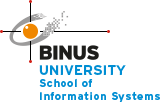Scenarios For Adopting Agile Auditing

In today’s fast-evolving business environment, organizations are increasingly adopting Agile methodologies to remain competitive, deliver value rapidly, and respond effectively to changing market demands. However, a critical question arises: how can governance, compliance, and quality standards keep pace in such dynamic settings?
Here are some scenarios where Agile Auditing can align seamlessly with organizational needs:
- Operating in a Rapidly Changing Environment
If your organization frequently updates products, shifts strategies, or delivers in short cycles, Agile Auditing provides real-time feedback without disrupting momentum. This approach is particularly suited to organizations experiencing frequent or unexpected changes.
- Leveraging Agile or Hybrid Methodologies
Agile Auditing aligns with practices like Scrum or Kanban, synchronizing audit processes with sprint cycles and focusing on value-driven outcomes.
- Focusing on Collaboration Over Compliance Alone
Agile Auditing promotes open communication and strong partnerships between teams and auditors, fostering a supportive atmosphere for achieving compliance and quality goals.
- Emphasizing Continuous Improvement
Unlike traditional audits that provide feedback only at the end, Agile Auditing delivers ongoing insights, enabling teams to address issues and enhance processes immediately. It nurtures trust and collaboration between auditors and auditees.
- Balancing High Standards with Flexibility
Industries like technology, healthcare, and finance demand rigorous compliance alongside adaptability. Agile Auditing strikes this balance effectively.
- Improving Risk Identification
Through iterative monitoring and feedback, Agile Auditing allows organizations to detect and address emerging risks early.
- Increasing Audit Value
By providing timely and relevant insights, Agile Auditing enhances the impact of audits, offering greater value to management and stakeholders.
Transitioning to Agile Auditing
To integrate Agile Auditing effectively, consider the following steps:
- Evaluate Current Audit Processes: Identify challenges or inefficiencies in your traditional auditing methods.
- Train Audit Teams: Equip auditors with the knowledge and skills needed to apply Agile principles successfully.
- Engage Stakeholders: Collaborate with teams, management, and external partners to align goals and expectations.
- Start Small: Implement Agile Auditing on a pilot basis with a specific team or project to refine the approach before broader adoption.
- Utilize Agile Tools and Metrics: Use tools like Jira or Trello for tracking, and establish metrics that align with Agile objectives.
Considerations for Agile Auditing
While Agile Auditing offers significant benefits, certain factors should be addressed:
- Resistance to Change: Organizations with a strong preference for traditional auditing methods may find transitioning to Agile challenging. Clear communication about its benefits can help overcome this.
- Skill Development: Auditors may need specialized training to implement Agile practices effectively.
- Maintaining Quality: Ensuring the rigor and reliability of audits is essential within an Agile framework.
Ultimately, the suitability of Agile Auditing depends on your organization’s unique context, priorities, and goals. With the right preparation, Agile Auditing can enhance governance, improve responsiveness, and drive greater value in today’s dynamic business landscape.

